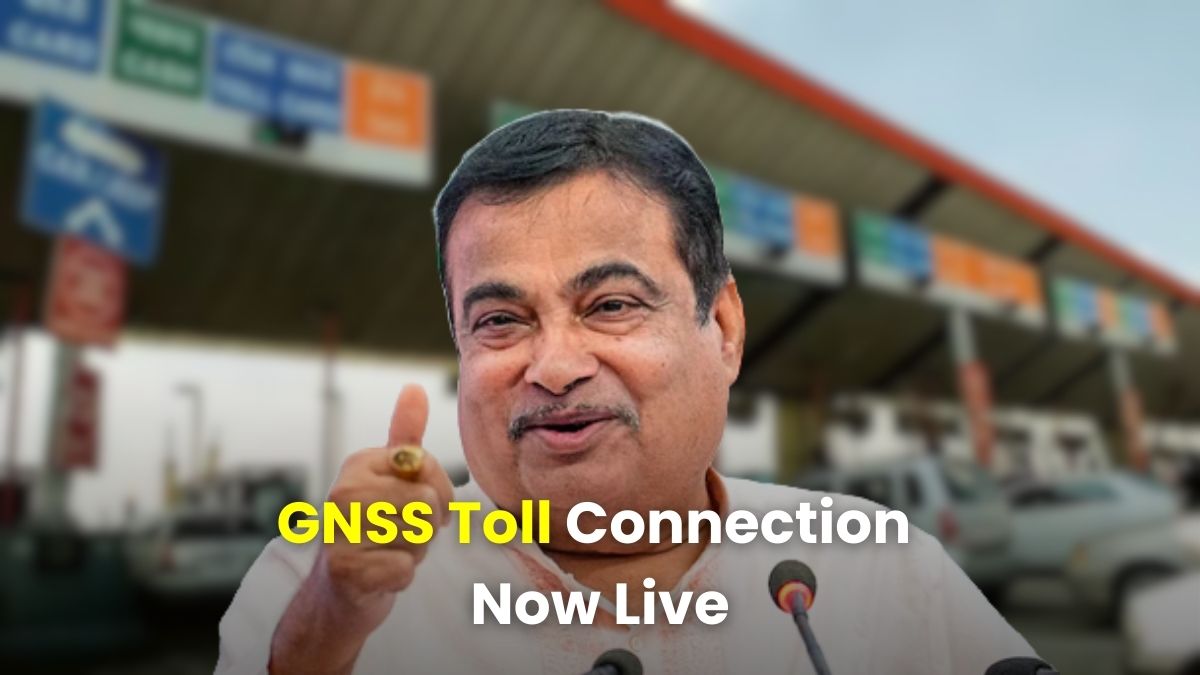GNSS Toll Connection – The way we pay tolls on highways in India is changing, and the latest update is all about convenience. Thanks to the integration of GNSS (Global Navigation Satellite System) with FASTag, toll payments are about to get a whole lot smoother. This system, now live across various highways, will allow FASTag users to breeze through toll plazas without the usual stop-and-go traffic. So, what exactly is GNSS tolling, and how does it improve the travel experience? Let’s dive into the details.
What is GNSS Toll Connection?
GNSS technology uses GPS signals to determine the location of a vehicle, making toll payments automatic based on where the vehicle is on the highway. Gone are the days of stopping at toll booths to manually pay fees. With GNSS, the toll is automatically deducted from the FASTag account as you drive through a toll area. It’s as simple as that!
Key Features of GNSS Toll Connection
- Automatic Toll Payments: The system calculates and deducts the toll charges automatically based on your location, without any need for you to stop.
- Seamless Experience: No more waiting at toll booths. The payment happens automatically as you pass through the toll zones.
- Increased Efficiency: With fewer cars stopping at toll booths, the flow of traffic is smoother, and congestion is reduced.
- Real-Time Updates: The GNSS system provides instant updates, calculating the toll based on the exact distance traveled.
How GNSS Technology Improves Tolling
The switch to GNSS tolling offers a lot of benefits, making the entire process smoother for FASTag users. Here’s how it works:
- More Accurate Billing: The system uses GPS signals to track your vehicle’s exact location, ensuring you are charged the correct toll based on the distance you travel.
- Convenience: No need to stop or worry about cash payments. Toll charges are calculated automatically as you drive.
- Less Traffic: By eliminating the need to stop at toll booths, GNSS helps reduce traffic jams, especially during peak hours.
Key Benefits for FASTag Users
The GNSS system brings a host of advantages for FASTag users, making highway travel more convenient and efficient.
- Faster Travel: No more waiting in line at toll booths. Your journey is faster and uninterrupted.
- Accurate Charges: You only pay for the distance you’ve traveled, so there’s no overcharging.
- Cost-Effective: With less reliance on physical toll booths, maintenance costs are lowered, and this might lead to reduced toll rates.
- Real-Time Tracking: You can track your toll payments through the FASTag mobile app or web portal.
- Environmental Impact: Fewer vehicles stopping at toll booths means reduced fuel consumption and lower emissions, which is great for the environment.
How to Activate and Use GNSS Toll Connection
For those already using FASTag, getting started with the GNSS tolling system is a breeze. There’s no need to buy new equipment or make major changes to your vehicle. Here’s how to activate and use the GNSS toll connection:
- Ensure Your FASTag Is Active: Make sure your FASTag is linked to your bank account and is working properly.
- Enable GNSS Service: If your vehicle is newer, it likely already has the GNSS feature installed. If not, you might need to update your vehicle’s system.
- Download the Official FASTag App: The app from the National Highways Authority of India (NHAI) will help you track your toll payments and get real-time updates.
- Check Compatibility: Make sure your vehicle is compatible with the GNSS system. Most modern vehicles with GPS should work.
- Hit the Road: Once everything is set up, the toll payment will be automatically deducted as you pass through toll zones.
Fees and Charges under the GNSS Toll System
The GNSS toll system calculates charges based on the vehicle type and the distance traveled. Here’s a basic idea of how the toll fees are structured:
- Private Car: For a 50 km journey, the fee could be around ₹50, while for 100 km, it would be ₹100, and so on.
- Bus: A bus would pay ₹100 for 50 km, ₹200 for 100 km, and so on.
- Truck: For trucks, the fee could be ₹200 for 50 km, ₹400 for 100 km, and higher for longer distances.
Note that these fees are indicative, and actual charges will vary depending on the location and toll plaza.
Impact of GNSS on Toll Booth Operations
With GNSS tolling, toll booths will operate much more efficiently:
- Less Human Intervention: The shift towards automation reduces the need for manual toll collection, making the process faster and reducing the risk of errors.
- Increased Speed: Without the need to stop and pay, vehicles can pass through toll areas quickly, reducing congestion at toll plazas.
- Better Security and Transparency: The GNSS system ensures that toll payments are tracked and recorded accurately, making the process more transparent and secure.
The introduction of GNSS tolling is a game-changer for FASTag users in India. It’s faster, more accurate, and more convenient than ever before. With reduced traffic at toll booths, real-time payment tracking, and lower operational costs, this new system is set to make highway travel smoother and more efficient. If you haven’t already, now is the perfect time to activate your FASTag and start enjoying the benefits of the GNSS toll connection.



